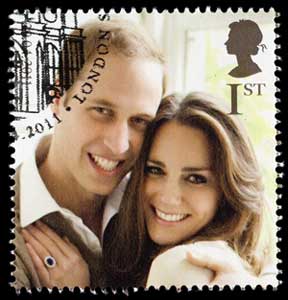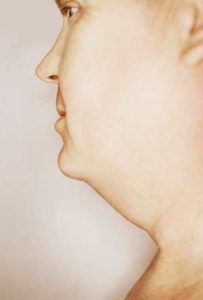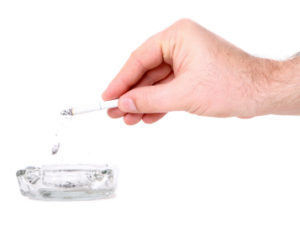 Your all-inclusive cruise might not be all-inclusive after all! Although seasickness is nothing new for most people, few know about a much rarer side effect of — at least what should be! — a relaxing cruise, plane flight, or car trip: Mal de Debarquement syndrome. Those afflicted with Mal de Debarquement syndrome end up paying for their trip long after they return to land.
Your all-inclusive cruise might not be all-inclusive after all! Although seasickness is nothing new for most people, few know about a much rarer side effect of — at least what should be! — a relaxing cruise, plane flight, or car trip: Mal de Debarquement syndrome. Those afflicted with Mal de Debarquement syndrome end up paying for their trip long after they return to land.
Little is truly known about what causes Mal de Debarquement syndrome, but it is a disorder of the balance system set off by exposure to motion. By definition, it is the sense of imbalance and/or movement that persists for more than two days after a cruise, plane flight, car trip, train ride, or other “ride.” Interestingly, there is usually NO accompanying nausea.
Although “sea legs” are common after prolonged exposure to motion, they should last less than two days. Unfortunately, there are no documented preventive measures for Mal de Debarquement syndrome, but those prone to motion sickness may benefit from taking motion sickness remedies to prevent or mitigate these symptoms from the initial moment they step into a car, plane, train or ship.
Those suffering from Mal de Debarquement often feel as if they are rocking and swaying while steady on land. This can cause dizziness and headaches, and sufferers might become anxious and depressed. Thus, early diagnosis is very important! The most effective treatments have included Cawthorne vestibular strengthening exercises and vestibular rehab training.
As an expert ENT, Dr. Michelle Yagoda works hand-in-hand with audiologists to help educate, diagnosis, and treat those with Mal de Debarquement syndrome. As the official Mal de Debarquement awareness month approaches in June, she hopes to raise more awareness of this little-understood phenomenon.
 Plastic Surgery Trending: Kate’s nose!
Plastic Surgery Trending: Kate’s nose!





























 The Genetics of a “Gummy Smile”
The Genetics of a “Gummy Smile”
 The decision to get a surgery or procedure done is a big one for both financial and aesthetic reasons. Dr. Michelle Yagoda strives to offer the best to patients regarding both financing and treatments — which includes taking into consideration payment options.
The decision to get a surgery or procedure done is a big one for both financial and aesthetic reasons. Dr. Michelle Yagoda strives to offer the best to patients regarding both financing and treatments — which includes taking into consideration payment options. Your all-inclusive cruise might not be all-inclusive after all! Although seasickness is nothing new for most people, few know about a much rarer side effect of — at least what should be! — a relaxing cruise, plane flight, or car trip:
Your all-inclusive cruise might not be all-inclusive after all! Although seasickness is nothing new for most people, few know about a much rarer side effect of — at least what should be! — a relaxing cruise, plane flight, or car trip:  The Herpes simplex type 1 virus, or HSV-1, is a virus usually acquired during childhood through direct contact of skin sores or infected secretions. Traditionally treated with medications including Acyclovir, Famvir and Valtrax, there is no cure for herpes. Treatment options aim to decrease the pain from an outbreak and help shorten the subsequent healing time.
The Herpes simplex type 1 virus, or HSV-1, is a virus usually acquired during childhood through direct contact of skin sores or infected secretions. Traditionally treated with medications including Acyclovir, Famvir and Valtrax, there is no cure for herpes. Treatment options aim to decrease the pain from an outbreak and help shorten the subsequent healing time. “Selfie:” A word that is very common with smartphone users! Ellen Degeneres’ Oscar selfie is not only the most tweeted picture of all time, it is an example of the increased interest in these types of photos. According to the
“Selfie:” A word that is very common with smartphone users! Ellen Degeneres’ Oscar selfie is not only the most tweeted picture of all time, it is an example of the increased interest in these types of photos. According to the  Smoking
Smoking Is the doctor really always right? Is it okay to question the expert? If you have worried that something was wrong even though the doc reassured you that it wasn’t, you are not alone.
Is the doctor really always right? Is it okay to question the expert? If you have worried that something was wrong even though the doc reassured you that it wasn’t, you are not alone.  With the holiday season coming to a close, gift trend reports are coming in. What was one of the biggest gift-giving growth margins of 2013? Plastic surgery! According to major news channels, the gifting of cosmetic surgery increased 25-30%. This included both cosmetic surgeries/treatments and gift cards to be used in plastic surgeons’ offices. The number of procedures done without being given as gifts rose in December, too – which is good, since taking a little time to care for ourselves has been shown to be essential for our happiness. We deserve it!
With the holiday season coming to a close, gift trend reports are coming in. What was one of the biggest gift-giving growth margins of 2013? Plastic surgery! According to major news channels, the gifting of cosmetic surgery increased 25-30%. This included both cosmetic surgeries/treatments and gift cards to be used in plastic surgeons’ offices. The number of procedures done without being given as gifts rose in December, too – which is good, since taking a little time to care for ourselves has been shown to be essential for our happiness. We deserve it!